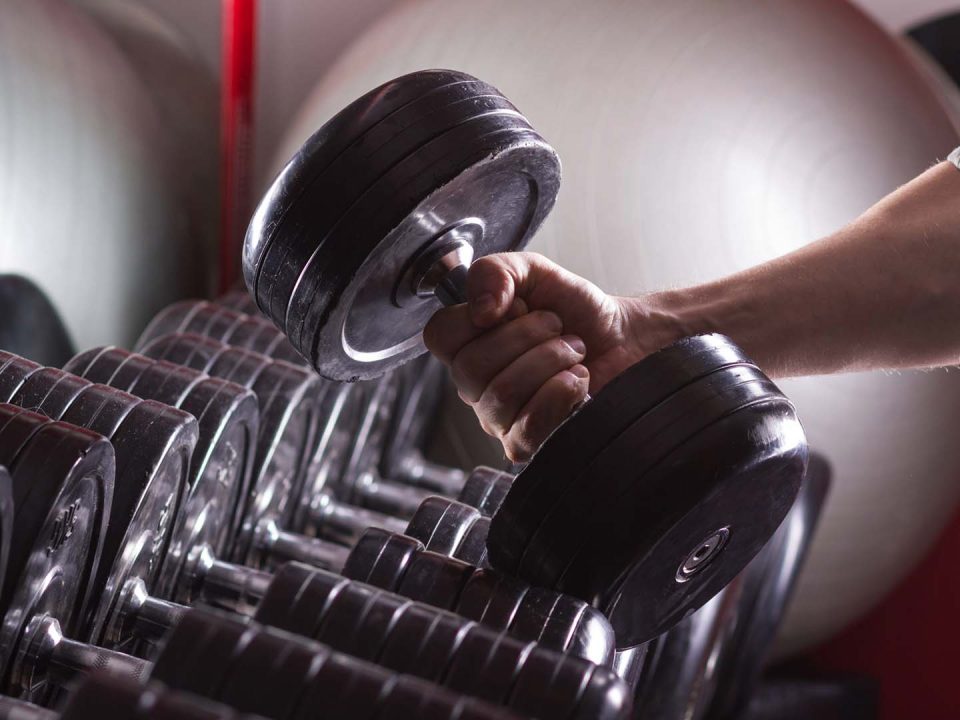Ready to start your fitness journey? Full body workouts are your perfect first step. These workouts target all your major muscle groups in a single session, making them incredibly time-efficient and effective.
Think of full body training as giving your entire body a tune-up in one go. Unlike split routines that focus on individual body parts, full body workouts help you build overall strength and burn more calories. Research shows beginners can gain up to 2.5 pounds of muscle per month with consistent full body training.
You'll want to hit the gym 2-4 times per week when starting out. Three sessions per week is the sweet spot, giving you enough stimulus for growth while allowing proper recovery. Studies indicate that training each muscle group 2-3 times weekly leads to optimal strength gains for beginners.
Getting started doesn't require fancy equipment. You'll need:
- A set of adjustable dumbbells or access to basic gym equipment
- A sturdy bench
- Comfortable workout clothes
- Supportive athletic shoes
Remember, proper form beats heavy weights every time. Start light and focus on learning movements correctly. This approach reduces injury risk and builds a solid foundation for long-term success.
The Perfect Beginner's Workout Schedule
Ready to start your fitness journey? Let's create a schedule that works for you. The sweet spot for beginners is training three times per week, with rest days in between. This gives your body time to recover and grow stronger.
Here's your ideal weekly plan:
- Monday: Full-body workout
- Wednesday: Full-body workout
- Friday: Full-body workout
Each session should last 45-60 minutes. This includes a proper warm-up and cool-down. Starting with shorter workouts helps build endurance and prevents burnout. As you get stronger, you can gradually increase your workout time.
Want to make your routine stick? Pick workout times that match your daily schedule. Early bird? Hit the gym before work. Night owl? Evening sessions might be your thing. The best time to work out is when you'll actually do it.
Keep a workout log to track your progress. Write down the exercises, weights, and how you felt during each session. This helps you stay accountable and see your improvements over time.
Remember, consistency beats perfection. Missing a workout isn't the end of the world. Just get back on track with your next scheduled session. Your body needs time to adapt to this new routine, so be patient with yourself.
Essential Compound Exercises
Ready to build strength and transform your body? Let's dive into the most effective exercises for your full-body workout. These movements work multiple muscle groups at once, giving you the biggest bang for your buck.
The squat is your lower body powerhouse. Stand with feet shoulder-width apart, lower your body as if sitting back into a chair, and push through your heels to stand up. Keep your chest up and core tight throughout the movement. Start with bodyweight squats before adding resistance.
Next up is the deadlift, your total-body strength builder. Begin with the bar against your shins, hinge at your hips, and lift the weight by driving your feet into the ground. Think about pushing the floor away rather than pulling the weight up. For beginners, start with a lightweight or practice the movement pattern using a broomstick.
The bench press develops your upper body pushing strength. Lie on a flat bench, grip the bar slightly wider than shoulder-width, and lower it to your chest with control. Press back up while keeping your feet planted firmly on the floor. If you're new to lifting, try dumbbells first – they're more forgiving and help build stability.
Rows complete your foundation by strengthening your back. Using a barbell or dumbbells, bend forward at your hips and pull the weight toward your lower chest. Imagine squeezing an orange between your shoulder blades at the top of each rep. Start with supported rows using a bench if needed.
Sets, Reps and Progressive Overload
Starting your fitness journey doesn't have to be complicated. Let's break down exactly how many sets and reps you need to see results. For beginners, start with 2-3 sets per exercise. This sweet spot helps build strength while preventing burnout.
Your rep range matters too. Aim for 8-12 reps when you're just starting out. This range is perfect for building both strength and muscle. Keep the weight challenging but manageable – you should be able to complete all reps with good form.
Here's a simple way to structure your exercises:
- First set: Warm up with 60% of your working weight
- Second set: Increase to 80% of your working weight
- Final sets: Use your full working weight
Progressive overload is your secret weapon for getting stronger. Each week, try to do just a little bit more than before. This could mean adding one more rep, using slightly heavier weights, or improving your form. Small improvements add up to big results over time.
Track your workouts in a notebook or fitness app. Write down the exercise, weight used, and reps completed. This helps you see your progress and know when it's time to increase the challenge.
Recovery and Rest Guidelines
Your body needs proper rest to build strength and muscle. Think of recovery as the secret ingredient to your fitness success. Getting enough rest between workouts helps your muscles repair and grow stronger.
Give your muscles at least 48 hours to recover between full-body sessions. This means if you work out on Monday, wait until Wednesday or Thursday for your next session. Your body sends clear signals when it needs rest – feeling extra tired or sore means it's time to take a break.
Sleep plays a huge role in your fitness journey. Aim for 7-9 hours each night to help your muscles recover and keep your energy levels high. Quality sleep also helps balance your hormones, which is crucial for building strength.
What you eat after working out matters just as much as the exercise itself. Try to eat within 30 minutes after your workout. Include both protein and carbs in your post-workout meal – think chicken with rice or a protein shake with banana. This helps your muscles recover faster and keeps you energized.
Simple recovery techniques can make a big difference. Try gentle stretching or foam rolling on your rest days. A 10-minute walk can also help reduce muscle soreness and keep you moving without overdoing it.
Common Mistakes to Avoid
Starting your fitness journey is exciting, but it's easy to make mistakes along the way. Let's tackle the most common errors and help you stay on track.
Rushing through your warm-up is a major pitfall many beginners face. Your body needs 5-10 minutes of light cardio and dynamic stretches to prepare for exercise. A proper warm-up reduces injury risk and improves workout performance.
Poor form is another frequent issue that can lead to injury. Focus on mastering proper technique with lighter weights before increasing the load. Studies show that 40-50% of gym injuries stem from improper form, according to research from Mind Pump Media.
Many beginners fall into the trap of training too frequently. Your muscles need time to recover and grow stronger. Stick to 2-4 workouts per week with at least one rest day between sessions. Men's Health reports that overtraining can lead to decreased performance and increased injury risk.
Don't skip the basics in favor of fancy exercises. Master fundamental movements like squats, deadlifts, and push-ups first. These exercises build a strong foundation and deliver the best results for beginners.
Failing to track your progress is a common oversight. Keep a simple workout log to record weights, sets, and reps. This helps you stay accountable and ensures you're making steady progress.
Remember to listen to your body. If something doesn't feel right, take a step back and reassess your form or seek guidance from a qualified trainer.
Measuring Progress: Your Roadmap to Success
Tracking your fitness journey is exciting! Let's explore simple ways to measure your progress and celebrate every win along the way.
Keep a workout journal to record your exercises, weights, and reps. This helps you spot improvements week by week. Remember, even small gains are worth celebrating! According to Mind Pump Media, beginners often see strength increases of 5-10% every 2-3 weeks when following a consistent program.
Take progress photos every 4 weeks. Stand in the same spot, wear similar clothes, and snap photos from the front, side, and back. These visual markers often reveal changes that the scale misses. A study featured in Men's Health showed that progress photos helped 87% of participants stay motivated with their fitness goals.
Track your energy levels and mood after workouts. Notice how exercises become easier over time. When you can complete all sets with good form, it's time to increase the challenge. FitToTransform Training suggests bumping up the weight by 2.5-5 pounds or adding 1-2 reps per set.
Set realistic milestones:
- Week 1-4: Master proper form
- Week 5-8: Increase weights gradually
- Week 9-12: Add 1-2 reps to each set
- Week 13+: Try more challenging variations
Remember, progress isn't just about lifting heavier weights. Better form, increased endurance, and improved confidence are all signs you're moving forward. Celebrate these victories – they're proof that your hard work is paying off!







